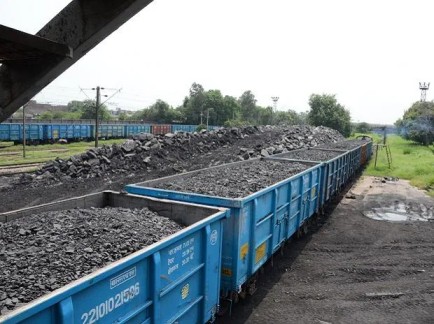India–US Trade Tensions Rise Over Steel and Auto Tariffs NMDC Limited reports a 38% drop in Q4 FY24 consolidated net profit RINL to Raise $23 Million Through Land Sales Amid Crisis

According to the Coal Ministry data, Indian Railways supplied an unprecedented 297 rakes everyday on average to the power industry in March 2024, ahead of the peak demand for electricity, which happens from April to June. Railways supplied the power industry with an average of 297.7 rakes per day, 2% higher mo-m and 10% y-o-y.
In March 2024, for the non-power industry, railways supplied around 37.3 rakes on a daily basis, higher by 11% m-o-m and 64% y-o-y. Coal miners despatched 90.31 million tonnes (MT) of the commodity in March this year. Railways account for 65% of the coal transported in the country.
In FY24, railways transported around 787.6 MT of coal, accounting for about 49% of the total cargo carried by the national transporter. Coal accounts for a major part of railways earnings from freight movement. The country’s expanding industrial br and household income have pushed up the demand for electricity of which more than 70% is generated by burning coal.
The emerging economy’s power demand is growing at around 7% per annum, which translates into more demand for coal. Besides, the Power Ministry has projected a pan-India peak demand of 260 GW in FY25 compared to 240 GW in FY23. The Ministries of Power, Coal and Railways have been working on increasing the coal-carrying capacity of the rail network.
On July 27, 2023, Power Minister R K Singh, in a written response in Lok Sabha, said “According to Railways, likely increase in coal transportation capacity during FY24 and FY25 is about 185 MT.” “As per Railways, during FY23, the net induction of coal-carrying wagons was about 8,800 (about 150 rakes). During FY24, the likely net induction would be about 200 rakes, which could provide an additional 50 rakes/day for coal loading. The expected increase in annual coal transportation capacity on account of wagon induction would be about 70 MT,” he added.
“Similarly, likely net induction of coal carrying rakes in FY25 is about 250, which could provide additional 60 rakes per day. The expected increase in annual coal transportation capacity on account of wagon induction would be about 85 MT,” he added. Coal Ministry has launched the Coal Logistics Policy and Integrated Coal Evacuation Plan to address the issue of transportation amidst rising demands.
The plan is to address the issue through construction of new railway lines and capacity augmentation of railway networks, First Mile Connectivity (FMC) projects, rail connectivity projects, and railway sidings. These evacuation facilities are planned in line with the country’s long-term production projection.
Railways has taken up 14 critical projects for improving coal evacuation. Out of these, five rail lines have already been commissioned and others are at various stages of construction. Under the PM Gati Shakti National Master Plan (NMP), the Government has launched the national logistics policy, under which, every sector in the economy that deals with logistics is expected to come out with a sectoral plan for efficient logistics.
The Coal Ministry, in consultation with all coal miners, has mapped the existing and proposed coal mines required for peak production with PM Gati Shakti. The Ministry also mapped existing and upcoming rail infrastructure. Under the coal logistic plan, the requirement of the coal sector for peak production up to 2047 has been worked out.
The Government has identified 37 projects on which Railways has started working. Besides, the Eastern Dedicated Freight Corridor (DFC), from Ludhiana to Sonnagar (1337 km), will mainly cater to coal, cement, finished steel, and other bulk commodities. It will facilitate faster evacuation of coal from eastern India to power plants in North India.
Also Read : Rourkela Steel Plant expansion gets fresh push as Odisha CM assures full support Malaysia Unveils Roadmap to Make Steel Industry Fully Green by 2050